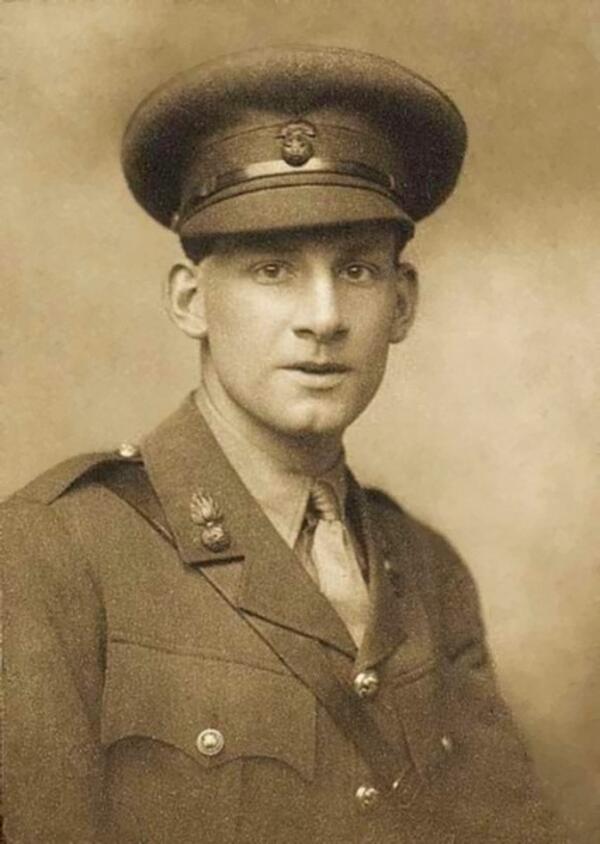Siegfried Sassoon
Siegfried Sassoon is universally considered to have been one of the greatest poets of World War One, providing a detailed summary of the horrors faced by many soldiers during the war.
Born on 8th September 1886 in Kent, Sassoon studied Law and History at Clare College, Cambridge but he left university before graduating. Despite having discovered the poetry from the likes of Tennyson and Yeats, he temporarily lived a life of leisure - fox hunting, playing cricket and riding.
Encouraged to write poetry by Edward Marsh, Sassoon decided to move to London and immerse himself in the literary world, where he met Rupert Brooke. Although he finally felt he was heading in the right direction, war changed Sassoon’s plans for his future.
Sassoon enlisted on 2nd August 1914 and joined the Sussex Yeomanry. However, while training he suffered a badly broken right arm, which delayed his move to the front. After recovering he was given a commission in the Royal Welch Fusiliers in May 1915 and served with the 1st and 2nd Battalions as a 2nd Lieutenant.
His poetry was very patriotic at this time and comments on the more noble aspects of war. However, in later years he went on to criticise them for glorifying the war in which he was about to become fully immersed.

The death of Sassoon’s brother in Gallipoli in November 1915 and of his good friend David Thomas in March 1916 ensured the realities of war hit home very soon. However, it seemed to spur him on to revenge, encouraging him to go on patrol in No-Man’s Land when no patrols were planned and earning him the nickname ‘Mad Jack’.
These dangerous acts in which he sought revenge were only stopped when he was sent to the Fourth Army School at Flixécourt for four weeks, after which he calmed down and returned to duty. He went on to be awarded a Military cross in June 1916 for his bravery and leadership after bringing British soldiers back to the trenches after they had been wounded in German trenches.
Sassoon played no part in the Battle of the Somme. His unit was held in reserve at Kingston Road but he caught trench fever and was sent home by a sympathetic doctor who had heard about his award. He was passed as fit on 4th December and sent back in February 1917. However, within two days he caught German measles and spent ten days in hospital in Rouen.
Sassoon’s unit was also held in reserve for the Battle of Arras but he was wounded at Tunnel Trench during the Battle of Scarped where a German sniper shot him between the shoulders. As a result, he was sent to convalesce once more and it was during this period where he began to move away from patriotism, writing poetry that condemned senior officers. He also wrote his ‘Declaration’ and sent it - in an act of defiance - to his colonel. Although he expected to be punished for this, he was saved by Robert Graves who also served in the Welch Fusiliers and pursued his superiors that they should offer Sassoon support instead.
As a result of this, Sassoon was sent to Craiglockhart War Hospital in Scotland suffering from shell shock. While at the hospital, Sassoon wrote a lot of poetry and met Wilfred Owen, whom he encouraged to continue with his poetry.
After four months of convalescing, Sassoon was deemed fit enough to return to service and, after a short spell in Palestine, he was posted to France in February 1918. Despite being a commander he served on the front line and demonstrated the same recklessness that he had shown in 1915. Along with a corporal he decided to attack a German position at St. Floris and was wounded in the head on 13th July 1918. He was sent back to England to convalesce and would never see active service again. In March 1919, Sassoon resigned his commission and left the army.
Most of Sassoon’s war poetry commented on what it was like at home for those who had no experience of the war, particularly those who were profiting from it. However, he was also critical of those who commanded the army. After the war, he spent much of his time writing his autobiography, which was written in six volumes and took between 1928 and 1945 for him o complete. Sassoon died on 1st September 1967.
MLA Citation/Reference
"Siegfried Sassoon". HistoryLearning.com. 2024. Web.
